Philopappos Monument

The Philopappos Monument stands proudly atop Philopappos Hill, southwest of the Acropolis in Athens, offering sweeping views of the city and the sea beyond. Erected between 114 and 116 CE, it honors Gaius Julius Antiochus Epiphanes Philopappos, a Roman consul and prince of the Kingdom of Commagene, a region in modern-day Turkey. Philopappos was a respected benefactor of Athens, and the monument reflects the city’s gratitude. Built in the style of a grand tomb, it features a two-story marble façade with inscriptions and statues of Philopappos and his royal ancestors. Though much of its original decoration has been lost, the monument still conveys a sense of nobility and classical elegance. Its position on the hill, surrounded by pine trees and walking paths, makes it a popular spot for both locals and tourists. Beyond its historical value, the Philopappos Monument represents the cultural blending of Roman and Greek traditions and stands as a reminder of the enduring ties between Athens and the wider ancient world.
Athens GreeceThe Philopappos Monument is an ancient mausoleum located on Mouseion Hill in Athens, Greece, southwest of the Acropolis. Built in the early 2nd century AD, it was dedicated to Gaius Julius Antiochus Epiphanes Philopappos, a prince from the Kingdom of Commagene who became a Roman senator and an esteemed benefactor of Athens1. The monument was constructed by the citizens of Athens and Philopappos’ sister, Julia Balbilla, to honor his legacy. The structure features a two-story design with intricate reliefs depicting Philopappos as a Roman consul, accompanied by statues of his ancestors1. Over time, the monument suffered damage, but its remains continue to stand as a testament to Philopappos’ influence and the artistic achievements of the era. Today, the site offers visitors a panoramic view of Athens and is a popular destination for those exploring the historical landmarks surrounding the Acropolis.
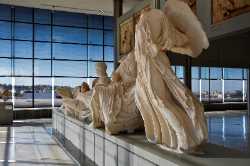 Acropolis Museum
Athens
Acropolis Museum
Athens
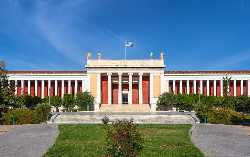 National Archaeological Museum
Athens
National Archaeological Museum
Athens
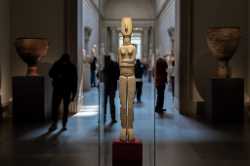 Museum of Cycladic Art
Athens
Museum of Cycladic Art
Athens
 Byzantine and Christian Museum
Athens
Byzantine and Christian Museum
Athens
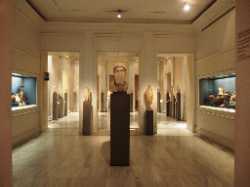 Benaki Museum
Athens
Benaki Museum
Athens
 Goulandris Museum
Athens
Goulandris Museum
Athens
 Numismatic Museum
Athens
Numismatic Museum
Athens
 War Museum Athens
Athens
War Museum Athens
Athens
 National Art Gallery Athens
Athens
National Art Gallery Athens
Athens
 Hellenic Motor Museum Athens
Athens
Hellenic Motor Museum Athens
Athens
 National Garden of Athens
Athens
National Garden of Athens
Athens
 Pedion tou Areos
Athens
Pedion tou Areos
Athens
 Mount Lycabettus
Athens
Mount Lycabettus
Athens
 Strefi Hill
Athens
Strefi Hill
Athens
 Filopappou Hill
Athens
Filopappou Hill
Athens
 Antonis Tritsis Park
Athens
Antonis Tritsis Park
Athens
 Acropolis of Athens
Athens
Acropolis of Athens
Athens
 Parthenon
Athens
Parthenon
Athens
 Temple of Hephaestus
Athens
Temple of Hephaestus
Athens
 Temple of Olympian Zeus
Athens
Temple of Olympian Zeus
Athens
 Odeon of Herodes Atticus
Athens
Odeon of Herodes Atticus
Athens
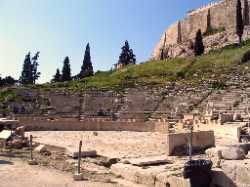 Theatre of Dionysus
Athens
Theatre of Dionysus
Athens
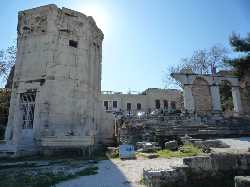 Tower of the Winds
Athens
Tower of the Winds
Athens
 Hadrian's Arch
Athens
Hadrian's Arch
Athens
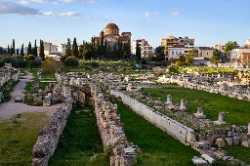 Kerameikos Archaeological Site
Athens
Kerameikos Archaeological Site
Athens
 Acropolis Fortress
Athens
Acropolis Fortress
Athens
 Daphni Monastery
Athens
Daphni Monastery
Athens
 Hellenic Parliament Athens
Athens
Hellenic Parliament Athens
Athens
 Varvakios Agora
Athens
Varvakios Agora
Athens
 Zappeion Hall
Athens
Zappeion Hall
Athens
 Presidential Mansion
Athens
Presidential Mansion
Athens
 Plaka
Athens
Plaka
Athens
 Monastiraki
Athens
Monastiraki
Athens
 Anafiotika
Athens
Anafiotika
Athens
 Syntagma Square
Athens
Syntagma Square
Athens
 Panathenaic Stadium
Athens
Panathenaic Stadium
Athens
 Technopolis
Athens
Technopolis
Athens
 Stavros Niarchos Foundation Cultural Center
Athens
Stavros Niarchos Foundation Cultural Center
Athens
 Athens Riviera
Athens
Athens Riviera
Athens
 Epigraphical Museum
Athens
Epigraphical Museum
Athens
 Athens National Historical Museum
Athens
Athens National Historical Museum
Athens
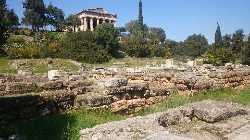 Ancient Agora of Athens
Athens
Ancient Agora of Athens
Athens
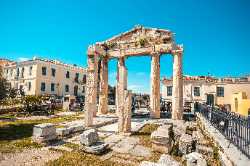 Roman Agora Museum
Athens
Roman Agora Museum
Athens
 Frissiras Museum
Athens
Frissiras Museum
Athens
 Herakleidon Museum
Athens
Herakleidon Museum
Athens
 Ilias Lalaounis Jewelry Museum
Athens
Ilias Lalaounis Jewelry Museum
Athens
 National Museum of Contemporary Art Αthens
Athens
National Museum of Contemporary Art Αthens
Athens
 Museum of Greek Folk Art
Athens
Museum of Greek Folk Art
Athens
 Hellenic Children’s Museum
Athens
Hellenic Children’s Museum
Athens
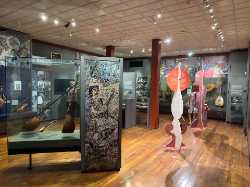 Museum of Popular Instruments
Athens
Museum of Popular Instruments
Athens
 Philatelic and Postal Museum
Athens
Philatelic and Postal Museum
Athens
 Kotsanas Museum of Ancient Greek Technology
Athens
Kotsanas Museum of Ancient Greek Technology
Athens
 Museum of the City of Athens
Athens
Museum of the City of Athens
Athens
 Gennadius Library
Athens
Gennadius Library
Athens
 Jewish Museum of Greece
Athens
Jewish Museum of Greece
Athens
 Museum of Pavlos & Alexandra Kanellopoulos
Athens
Museum of Pavlos & Alexandra Kanellopoulos
Athens
 Tatoi Palace
Athens
Tatoi Palace
Athens
 National Theatre of Greece
Athens
National Theatre of Greece
Athens
 Rex Theatre
Athens
Rex Theatre
Athens
 Onassis Stegi
Athens
Onassis Stegi
Athens
 Megaron Athens Concert Hall
Athens
Megaron Athens Concert Hall
Athens
 Pallas Theatre
Athens
Pallas Theatre
Athens
 Badminton Theatre
Athens
Badminton Theatre
Athens
 Peiraios 260
Athens
Peiraios 260
Athens
 Benaki Museum of Contemporary Art
Athens
Benaki Museum of Contemporary Art
Athens
 Athens Municipal Gallery
Athens
Athens Municipal Gallery
Athens
 Eleni Koroneou Gallery
Athens
Eleni Koroneou Gallery
Athens
 Rebecca Camhi Gallery
Athens
Rebecca Camhi Gallery
Athens
 Bernier/Eliades Gallery
Athens
Bernier/Eliades Gallery
Athens
 The Breeder Gallery
Athens
The Breeder Gallery
Athens
 Kalfayan Galleries
Athens
Kalfayan Galleries
Athens
 DESTE Foundation for Contemporary Art
Athens
DESTE Foundation for Contemporary Art
Athens
 National Observatory of Athens
Athens
National Observatory of Athens
Athens
 Penteli Observatory
Athens
Penteli Observatory
Athens